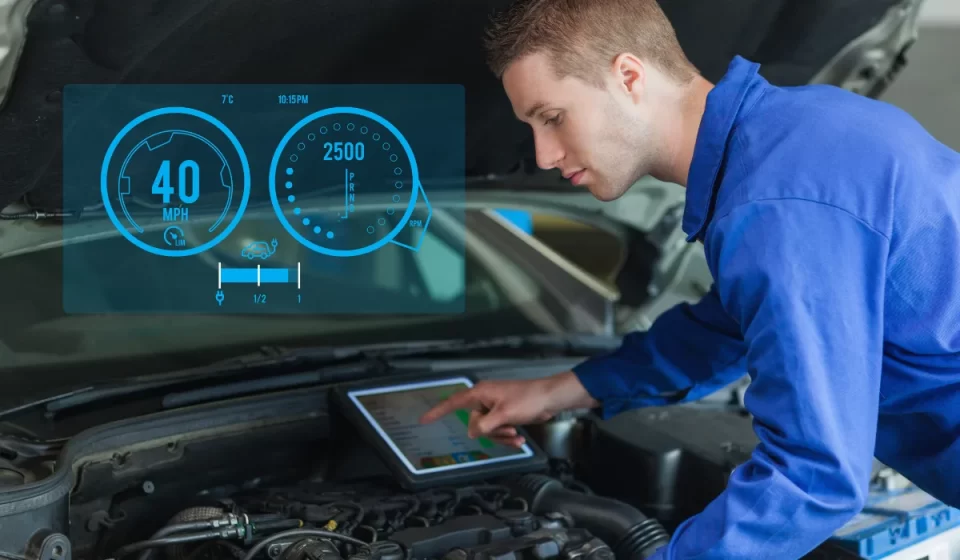It wasn’t long ago that software in cars meant navigation and entertainment. Fast forward to 2025, and the conversation has completely shifted. Artificial intelligence (AI) and the Internet of Things (IoT) have brought a tidal wave of transformation to vehicles—turning them into intelligent, connected machines that think, learn, and respond.
This evolution isn’t just driven by consumer demand. It’s being architected and accelerated by sophisticated automotive software development services, which now sit at the core of how modern mobility is engineered.
AI Brings the Brainpower
AI is redefining what’s possible inside a vehicle. From real-time traffic prediction to driver behavior analysis and adaptive cruise control, artificial intelligence powers a new level of responsiveness that was unthinkable a decade ago. Vehicles today process massive amounts of data per second—and turn that into smart decisions instantly.
What makes this possible is deeply integrated automotive software that works hand-in-hand with machine learning models. Whether it’s personalizing in-car experiences or recognizing road hazards, AI needs a reliable software backbone to operate consistently and safely.
IoT Creates a Living, Breathing Ecosystem
Connected cars don’t operate in isolation. Thanks to IoT, they’re part of an ever-growing digital network. A vehicle can now communicate with other cars, traffic lights, charging stations, and even your smart home. But managing this level of connectivity isn’t simple—it requires a robust backend capable of handling real-time data, remote diagnostics, and over-the-air updates.
That’s where a forward-thinking automotive software development company comes in. Their job isn’t just to make systems talk to each other—it’s to make sure they understand and respond to context. And that’s where the real innovation lies.
Smarter Safety Through Predictive Intelligence
AI doesn’t just enhance convenience—it makes driving safer. Advanced Driver Assistance Systems (ADAS) like lane departure warnings, emergency braking, and pedestrian detection are all rooted in artificial intelligence. But it’s not just AI at work. These features depend on low-latency, fail-safe software that processes and responds to inputs in milliseconds.
Through sophisticated automotive software development services, these systems are continually improved, trained on new data, and stress-tested for every edge case—because in safety, there’s no margin for error.
Real-Time Maintenance and Diagnostics
The days of dashboard guesswork are over. IoT sensors embedded throughout a vehicle can now monitor engine health, tire pressure, battery performance, and more transmitting that data directly to service centers or apps.
This kind of predictive maintenance isn’t just a bonus; it’s becoming a standard. But to make it work reliably, automotive software must be designed to securely transmit, receive, and act on data—sometimes across regions and cloud systems. It’s not just about detecting problems but proactively preventing them.
Personalization at Scale
AI enables vehicles to learn driver preferences, from seat positions to favorite routes and preferred temperature settings. Over time, this builds a uniquely personalized experience. When you integrate IoT, this intelligence extends beyond the car—syncing with calendars, apps, and even energy usage patterns at home.
Enabling this requires more than sensors and algorithms. It needs a sophisticated architecture crafted by a skilled automotive software development company that knows how to balance customization, performance, and security—all in one system.
Autonomous Driving Needs Both
Self-driving technology is still evolving, but the path forward is clear: it requires a combination of powerful AI decision-making and constant IoT-driven situational awareness. Lidar, radar, cameras—all feed data into a system that must not only process it but understand it in context and make safe decisions on the fly.
Behind the scenes, it’s the automotive software development services that bring this ecosystem together. They handle the integration of sensory inputs, vehicle dynamics, and response systems—all while meeting strict safety and regulatory standards.
Accelerated Product Development
With AI-led simulations and digital twins, manufacturers can now test and refine features in virtual environments before building physical prototypes. This dramatically speeds up R&D, reduces costs, and improves accuracy.
It also means software is no longer developed in isolation. The best automotive software is created in parallel with mechanical engineering—ensuring seamless interaction between code and hardware from day one.
New Revenue Streams and Business Models
AI and IoT are enabling entirely new business opportunities. From usage-based insurance models to in-vehicle e-commerce and remote upgrades, the connected car is becoming a platform for value beyond transport.
These models rely heavily on the flexibility and foresight of your automotive software development company, which must ensure your digital foundation is ready to support everything from real-time billing systems to app integrations.
Final Thoughts
AI and IoT aren’t just buzzwords anymore—they’re the engines powering a more intelligent, adaptive, and secure automotive future. But without smart, scalable software to hold it all together, the promise of these technologies would stall at the starting line.
That’s why the future of mobility doesn’t just belong to carmakers—it belongs to those who can build intelligent systems behind the wheel. And it all starts with the software.

